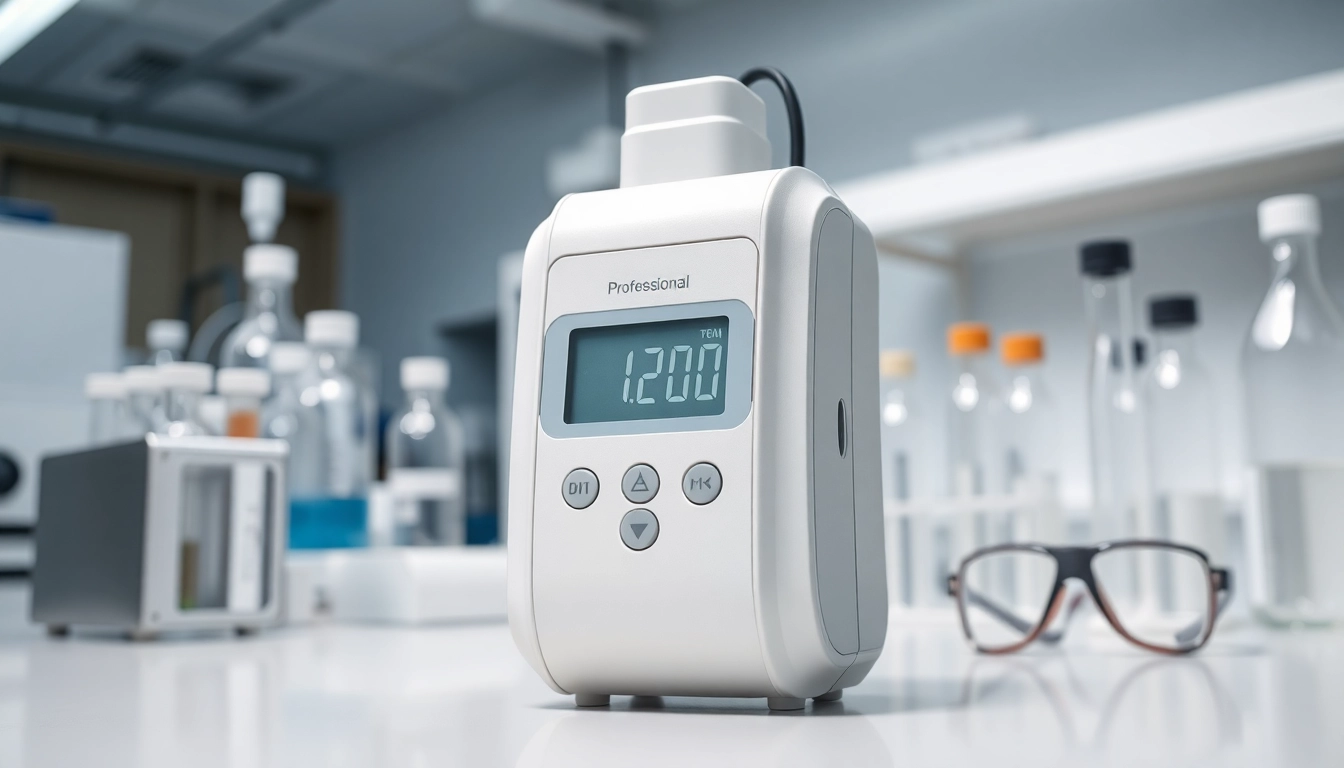Understanding Hydrogen Peroxide Detectors
What is a Hydrogen Peroxide Detector?
A hydrogen peroxide detector is a specialized device designed to sense and measure the concentration of hydrogen peroxide (H2O2) in the air. These detectors can be critical for environments where hydrogen peroxide is used or stored, such as in laboratories, food processing plants, and healthcare settings. The detector’s purpose is to provide an early warning of high concentrations of hydrogen peroxide, which can be harmful to health and safety.
How Hydrogen Peroxide Detectors Work
Hydrogen peroxide detectors typically operate on the principle of electrochemical or optical sensing. Electrochemical sensors use chemical reactions to produce an electrical current that correlates to the concentration of hydrogen peroxide in the air. On the other hand, optical sensors detect the light absorption characteristics of hydrogen peroxide, allowing for precise measurements even at lower concentrations. These detectors continuously monitor the air quality, triggering alarms when hydrogen peroxide levels exceed pre-set thresholds.
Types of Hydrogen Peroxide Detectors Available
There are several types of hydrogen peroxide detectors available, each serving different applications and environments. The primary types include:
- Portable Detectors: These handheld devices are suitable for spot-checking in various locations and are essential for workers who may be exposed to hydrogen peroxide in their daily tasks.
- Fixed Detectors: Installed permanently in areas where hydrogen peroxide is used or stored, fixed detectors provide constant monitoring and are often integrated into safety systems.
- Multi-gas Detectors: These versatile devices can detect multiple types of gases, including hydrogen peroxide, making them ideal for diverse industrial environments.
Importance of Hydrogen Peroxide Detection
Why You Need a Hydrogen Peroxide Detector
The necessity of a hydrogen peroxide detector cannot be overstated, especially in environments where the chemical is used. Hydrogen peroxide is a powerful oxidizer and can pose serious safety risks if not adequately monitored. Implementing a Hydrogen Peroxide detector is crucial in preventing accidents, ensuring the safety of personnel, and complying with health regulations.
Health Risks Associated with Hydrogen Peroxide Exposure
Exposure to hydrogen peroxide can lead to various health issues, depending on the concentration and duration of exposure. Low levels may irritate the skin, eyes, and respiratory tract, while higher concentrations can cause more severe health effects, including lung damage and chemical burns. Prolonged exposure can also lead to serious respiratory problems and other chronic conditions. Therefore, ensuring safe levels of hydrogen peroxide through effective detection is vital for occupational health.
Regulatory Standards and Compliance
Different industries are subject to various regulations regarding hydrogen peroxide usage and the need for monitoring systems. For example, the Occupational Safety and Health Administration (OSHA) sets permissible exposure limits, while the National Institute for Occupational Safety and Health (NIOSH) provides recommended exposure levels. Furthermore, many organizations are required to comply with industry-specific regulations to ensure safe working conditions, highlighting the need for reliable hydrogen peroxide detection systems.
Choosing the Right Hydrogen Peroxide Detector
Key Features to Look For
When selecting a hydrogen peroxide detector, various features should be taken into account:
- Sensitivity and Range: Choose a detector that can effectively measure the appropriate range of hydrogen peroxide concentrations for your needs.
- Response Time: A quicker response time is critical in ensuring immediate alerts, allowing for prompt actions in case of overexposure.
- Calibration: Look for detectors that are easy to calibrate, as regular calibration is necessary to maintain accuracy.
- Data Logging: Some modern detectors come with data logging capabilities, allowing for historical data to be reviewed for trend analysis.
- Alarm Systems: Ensure that the detector features audible and visual alarms for immediate alerts to any personnel present.
Comparison of Top Hydrogen Peroxide Detectors
Several brands and models of hydrogen peroxide detectors are leading in the market. Here’s a comparison of some top choices based on their features, benefits, and user reviews:
- Product A: This portable detector boasts a rapid response time and can detect low concentrations, ideal for laboratory settings.
- Product B: A fixed detector with an advanced alarm system and data logging capabilities suitable for industrial applications.
- Product C: Multi-gas detector that can handle various gases, providing versatility for facilities handling different materials.
Budget Considerations and Value for Money
When investing in a hydrogen peroxide detector, budget considerations are essential. The cost may vary significantly based on features, brand, and sensor technology. While it may be tempting to opt for the cheapest option, it’s important to prioritize quality and reliability. Investing in a high-quality detector may result in better long-term value, ensuring safety and compliance for your facility.
Installation and Maintenance of Hydrogen Peroxide Detectors
Steps for Proper Installation
Correct installation of hydrogen peroxide detectors is essential to their effectiveness. Key steps for installation include:
- Site Assessment: Conduct a thorough analysis of the area to determine optimal detector placement, considering airflow and potential leak sources.
- Mounting: Follow the manufacturer’s guidelines for mounting height and location—ranging from ceiling-mounted to wall-mounted—based on the detector type.
- Calibration: Once installed, calibrate the detector according to the specified settings to ensure accurate readings.
Routine Maintenance Best Practices
Routine maintenance is critical for ensuring ongoing functionality of hydrogen peroxide detectors. Best practices include:
- Regular Calibration: Schedule periodic calibration checks according to manufacturer recommendations to maintain accuracy.
- Battery Checks: For portable detectors, regularly inspect and replace batteries as needed to prevent false readings due to low power.
- Cleaning: Keep the detectors clean and free from debris that may impact performance, following manufacturer cleaning guidelines.
Common Issues and Troubleshooting Tips
Even the best detectors may encounter issues. Common problems include:
- False Alarms: These may stem from sensor contamination or calibration errors. Regular maintenance can help mitigate this risk.
- Sensor Failure: If readings suddenly fluctuate or stop, check batteries and conduct a sensor test as per the instructions.
- Communication Issues: For detectors that transmit data, ensure that all communication systems remain operational, checking for software updates when necessary.
Future Trends in Hydrogen Peroxide Detection Technology
Innovations in Sensor Technology
The future of hydrogen peroxide detection technology is promising, with continuous improvements being made. Innovations such as smaller, more sensitive sensors are emerging, which allow for more discrete and efficient monitoring. Additionally, the integration of smart technologies is enhancing the capability of detectors, enabling real-time data analysis and remote monitoring.
Impact of AI on Detection Methods
Artificial intelligence (AI) is beginning to play a significant role in the monitoring of hazardous materials, including hydrogen peroxide. AI-driven analytics can help identify patterns in data, predict potential exposure risks, and suggest preventative measures. This capability not only improves safety but also enhances overall facility management by optimizing monitoring systems.
Preparing for Future Developments in Safety Protocols
As regulations and safety protocols evolve, staying ahead of these changes is essential for any organization dealing with hydrogen peroxide. Future developments may include stricter compliance requirements and new technologies that enhance safety measures. Organizations should remain informed about emerging trends and adapt their practices accordingly to maintain a safe working environment.



